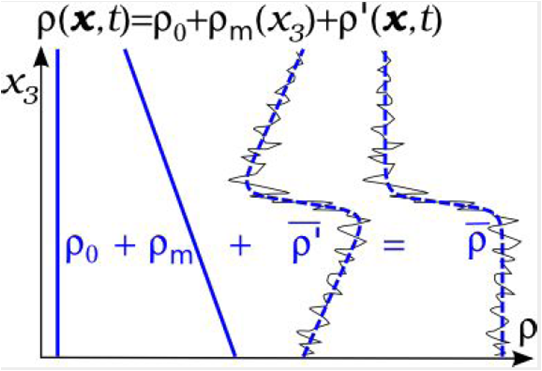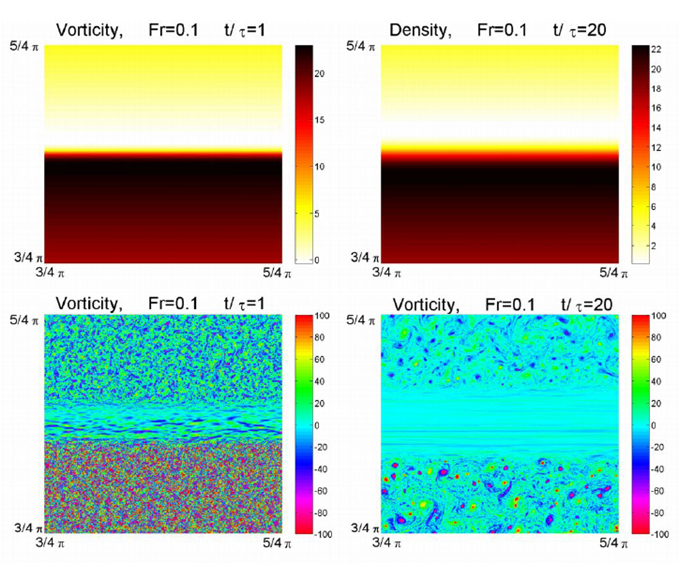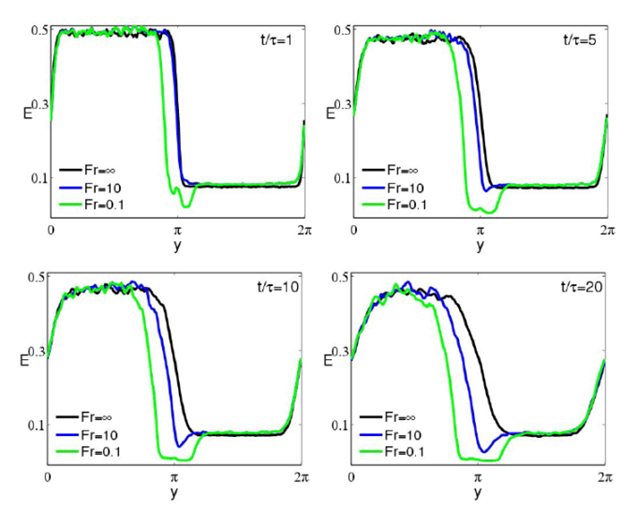ISCRA Project 2011-2012 (Class C)
- Details
- Last Updated on Monday, 16 June 2014 11:39
Turbulent Mixing in Stratified Flow
Principal Investigator: Francesca De Santi
Collaborators: Daniela Tordella, Michele Iovieno, Silvio Di Savino, Luca Gallana
This project is related to a previous study regarding the turbulent shearless mixing process which is due to the interaction between two isotropic turbulent fields with different kinetic energy. The associated numerical experiment consists of two decaying isotropic fields of kinetic energy E1 and E2, initially matched over a narrow region. Within this region the kinetic energy varies as a hyperbolic tangent as represented in Fig. 1.

Figure 1: Energy profile initial condition scheme.
This experiment was carried out both in three and two dimension. We have observed that the presence of a gradient of turbulent energy is a sufficient condition for Gaussian departure and that the intermittency is highly dependent on the turbulent energy ratio between the interacting field. High intermittency was observed also in the velocity derivative statistics. The anisotropy is thus seen on both large and small scale. In order to apply the results obtained on the turbulent self-diffusion to some idealized atmospheric problems, we want to extent this study by considering the presence of a stable density stratification. The results that we can obtain in this way would be an interesting starting point for a collaboration that we are organizing with R. Kerr (Warwick University) and J. Riley (University of Washington) and that will focus on a better understanding of the atmospheric energy spectra where the stratification effect plays a relevant role. For studying a flow density stratification Bousinesq's approximation can be used. The Boussinesq approximation states that density differences are sufficiently small to be neglected in all terms of the model equations, except when they are related to gravitational effects. Moreover, we can consider the case in which the density fluctuation linearly depend on temperature variations so that it is possible to rewrite the energy equation in terms of the fluctuating density. In this approximation we see the density field as composed by a background term, r0, by a linear function of the vertical coordinate only, rm, and by a time dependent fluctuation term, r’, see Fig. 2.

Figure 2: Scheme of the density decomposition.
We have already investigated the stratification effects on a shearfree mixing with a 2D code and obtained same interesting preliminary results, which are in the Master Thesis by F De Santi [6] and were presented to a few International Conferences [4,5]. A selection of this results are sketched in Fig 3,4 e 5. One of the issues in this study is to see how much the two dimensional behavior changes in a three-dimensional context, which is closer to the geophysical context. Currently we are working on the 3D version of DNS code that includes the stratification, and we are testing it on CASPER-3, a small HPC-center of the Politecnico di Torino (http://dauin-hpc.polito.it/?p=about).

Figure 3: Time evolution of density and vorticity in a mild stratified flow. By observing the density and vorticity fields, one can notice a significant interaction. This suggests that the rate of turbulent diffusion is still dominant in relation to gravity.

Figure 4: Time evolution of density and vorticity with Fr = 0.1, a case of intense stable stratification. We can observe that the two fields cannot interact through the central area of the domain, where a separation layer of zero-vorticity appears.

Figure 5: Time evolution of the energy profile. In the mixing layer the kinetic energy is lower than the minimum imposed by the initial condition. We can interpret this as an energy sink due to the work of the buoyancy forces.



